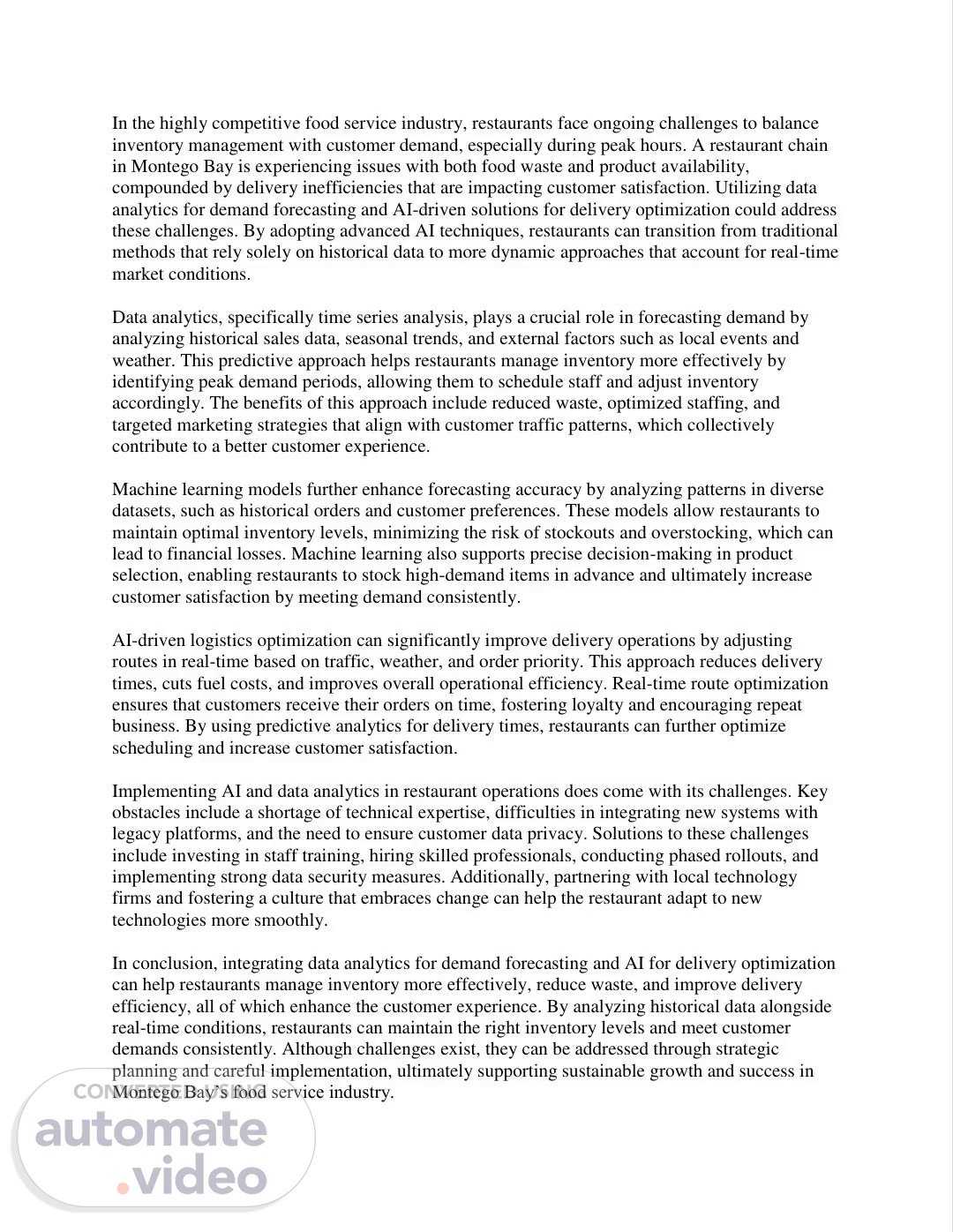Scene 1 (0s)
In the highly competitive food service industry, restaurants face ongoing challenges to balance inventory management with customer demand, especially during peak hours. A restaurant chain in Montego Bay is experiencing issues with both food waste and product availability, compounded by delivery inefficiencies that are impacting customer satisfaction. Utilizing data analytics for demand forecasting and AI-driven solutions for delivery optimization could address these challenges. By adopting advanced AI techniques, restaurants can transition from traditional methods that rely solely on historical data to more dynamic approaches that account for real-time market conditions. Data analytics, specifically time series analysis, plays a crucial role in forecasting demand by analyzing historical sales data, seasonal trends, and external factors such as local events and weather. This predictive approach helps restaurants manage inventory more effectively by identifying peak demand periods, allowing them to schedule staff and adjust inventory accordingly. The benefits of this approach include reduced waste, optimized staffing, and targeted marketing strategies that align with customer traffic patterns, which collectively contribute to a better customer experience. Machine learning models further enhance forecasting accuracy by analyzing patterns in diverse datasets, such as historical orders and customer preferences. These models allow restaurants to maintain optimal inventory levels, minimizing the risk of stockouts and overstocking, which can lead to financial losses. Machine learning also supports precise decision-making in product selection, enabling restaurants to stock high-demand items in advance and ultimately increase customer satisfaction by meeting demand consistently. AI-driven logistics optimization can significantly improve delivery operations by adjusting routes in real-time based on traffic, weather, and order priority. This approach reduces delivery times, cuts fuel costs, and improves overall operational efficiency. Real-time route optimization ensures that customers receive their orders on time, fostering loyalty and encouraging repeat business. By using predictive analytics for delivery times, restaurants can further optimize scheduling and increase customer satisfaction. Implementing AI and data analytics in restaurant operations does come with its challenges. Key obstacles include a shortage of technical expertise, difficulties in integrating new systems with legacy platforms, and the need to ensure customer data privacy. Solutions to these challenges include investing in staff training, hiring skilled professionals, conducting phased rollouts, and implementing strong data security measures. Additionally, partnering with local technology firms and fostering a culture that embraces change can help the restaurant adapt to new technologies more smoothly. In conclusion, integrating data analytics for demand forecasting and AI for delivery optimization can help restaurants manage inventory more effectively, reduce waste, and improve delivery efficiency, all of which enhance the customer experience. By analyzing historical data alongside real-time conditions, restaurants can maintain the right inventory levels and meet customer demands consistently. Although challenges exist, they can be addressed through strategic planning and careful implementation, ultimately supporting sustainable growth and success in Montego Bay’s food service industry..
